Olof Tempelman
Olof Samuel Tempelman (February 21, 1745 in Källstad, Östergötland – July 27, 1816 in Stockholm) was a Swedish architect and, from 1779, professor at the Royal Swedish Academy of Arts. He was appointed royal architect in 1799.
Olof Tempelman | |
|---|---|
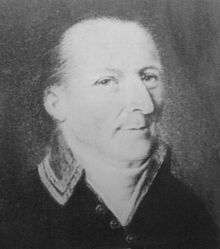 | |
| Born | Olof Samuel Tempelman February 21, 1745 Källstad, Östergötland, Sweden |
| Died | July 27, 1816 (aged 71) Stockholm, Sweden |
| Occupation | Architect, professor at the Royal Swedish Academy of Arts |
Early life
He was the son of Samuel Tempelman (1711-1748), curate of Herrestad, and his wife Susanna Maria Ridderström (1718-1753). According to tradition, the name was derived from the Templars. The family had immigrated from Dorpat in Estonia, and had for generations lived in Östergötland. Susanna was the daughter of a captain and grew up in Östergötland. When Tempelman was three years old, his father died. He was cared for by his father's older brother, Peter Tempelman, who served as priest in the Östra Stenby congregation. His uncle was a man of scientific interest, who collected books and had contact with the Royal Swedish Academy of Sciences. Tempelman had a happy childhood and showed an early interest in design. His received his early education at home and continued studying, along with his cousin, at the high school in Linköping.
At Uppsala University in 1763, he began studying theology and the humanities while working as a tutor for income. But he eventually immersed himself in science, following in the likes of Carl Linnaeus, Anders Celsius, and Samuel Klingenstierna. Tempelman wrote a thesis in astronomy under Daniel Melanderhjelm before starting on a master's thesis in physics, De frictione corporum super plano horizontale motorum.
Career
Carl Fredrik Adelcrantz succeeded Carl Johan Cronstedt as Superintendent of Antiquities in 1767, and two years later, he hired Tempelman. Adelcrantz hired Tempelman for his insight and skill, and took a personal interest in his development. While Tempelman wrote his master's thesis, he began work as an architect at the Superintendent's office. The thesis was elegantly illustrated and dedicated to Adelcrantz. He also continued to tutor and met the city architect Carl Henric König, one of the era's most skilled and high-profile architects as well as technically literate; he created drawings and descriptions for the inventor Christopher Polhem. This was the area that interested Tempelman.
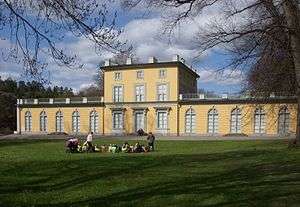
In the spring of 1775, Adelcrantz sent Tempelman on a study trip to Copenhagen. In October 1776, Gustav III assigned Tempelman to be an information aide for fortifications; he trained under Fredrik Dederichs who taught prospective officers and architects since the 1750s, including Erik Palmstedt. Tempelman came to be involved in Gustav III's new opera house at Norrmalmstorg. It was a complex project and Adelcrantz appointed Tempelman to be responsible for project implementation. Tempelman designed Gustav III's Pavilion in with detailed instructions from the king. Many of Tempelman projects related to churches but there were also other public buildings. In addition, he undertook private commissions. Adelcrantz often made the first sketches, but the two men worked closely together.
Adelcrantz urged Tempelman to become a professor. In 1780, he was appointed professor at the Royal Swedish Academy of Arts. Tempelman traveled to Paris and Rome. He visited Naples with Carl August Ehrensvärd and they also made a trip to Pompeii and Vesuvius, returning home via Venice, Milan, Genoa, Antibes, Marseille, and Paris. The 1780s were a successful period of increasingly independent tasks, and, with international experience, he developed a more independent design. The 1790s were a politically unsettled time in Sweden. In July 1798, Tempelman complained that sight in one of his eyes was deteriorating. The office of the Superintendent of Antiquities, however, was still busy designing churches, schools, and hospitals, especially outside Stockholm, and this is where Tempelman gave significant effort. After suffering two serious illnesses within a year, his physical and emotional health deteriorated. He did not give up work entirely, continuing for several years at the office of the Superintendent of Antiquities, and also teaching at the academy.
Personal life
Through his connections with Adelcrantz, Tempelman met Britta Elisabet Gyllenstam, daughter of Colonel Jonas Zacharias Gyllenstam and Catharina Elisabeth von Numers. They married in 1782. In the following year, they had a daughter, Mary Catherine, who died as an infant; his wife died a year later. Tempelman secondly married Dorothea Catherina Pagenkopff, the daughter of the German shoemaker Michael C. Pagenkopff, in 1804. They had five children, two boys who died early, and three girls. Tempelman died on 27 July 1816, and was buried in Stockholm, leaving behind his wife and three daughters.
Partial list of works

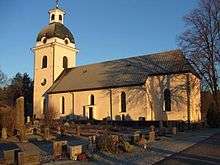
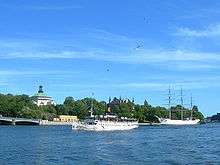
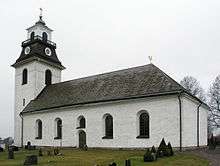

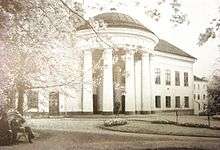
- Old Town, Stockholm, castle environment, 1774
- Royal Palace, rearranging the rooms & floors, 1774
- Tranemo church, Västergötland, 1774, not done, 1600 Century church in the 1880s, replaced by new hexagonal church building was designed by architect Emil Victor Langlet
- Ulriksdal, Uppland, north wing of the building's attic, 1774
- Västerås gymnasium, Västmanland, restructuring proposals for Senate, 1774
- Hycklinge Church, Ostrogothia, 1775, Per Wilhelm Palm Roth prepares new draft 1792
- Göta Court of Appeal, Jonkoping, 1775
- Valbo church, Gästrikland, tower and vestry, 1775, the tower was built in 1775
- Nora Church, Västmanland, 1776, not performed, a new church built in the 1880s
- Selångers church, Medelpad, 1776, erected in 1780-1781
- Sollerö church, Dalarna, 1776
- Sofia Magdalena Church, Askersund, school and almshouses, 1777
- Björsäters church, Västergötland, 1777
- Helsingborg, Corps-de-garde, 1777, building guards and jail completed in 1778, demolished 1882
- Core Church, West Yorkshire, organ facade in 1777, destroyed by fire in 1893
- Nässjö old church, Småland, 1777, erected in 1789-1791
- Hornstull, city sports and customs houses, Stockholm, 1777, the archway demolished in 1905, customs houses demolished in 1933
- Skeppsholmen, magazines, Stockholm, 1777 & 1779, rebuilt, now part of the Academy of Fine Arts
- Tuna church, Medelpad, tower and nave, 1777, long house with a gable roof was built from 1776 to 1778, the tower was built until 1937
- Uppsala Cathedral, Sture chancel, wrought iron grilles, 1777
- Western Torups Church, Zealand, organ facade, 1777
- Årstads courthouse, Halland, 1777, torn, probably 1973
- Ödeshögs Church, West Yorkshire, 1777, rebuilt in the 1880s
- Örkened Church, Zealand, 1777, erected in 1786-1788
- Alvesta church, Småland, organ façade, 1778, built as proposed by Pehr Schiörlin
- Stora Kopparberg church, Falun, tower and altar set-up, 1778, the tower built in 1780, transformative 1900, altar setup exchanged 1900
- Kil's Church, wa, towers, 1778, was built in 1779-1780
- Kläckeberga church, Smaland, altarpiece installation, 1778, not done
- Linkoping, Stångebro, stone bridge, 1778, erected in 1779-1780, demolished for the construction of the Kinda Canal, new bridge for drawing 1870
- Replots church, Ostrobothnia, Finland, 1778, erected in 1781, however, without a tower
- Sollerö church, Dalarna, pulpit, 1778
- Säters church, Dalarna, 1778, begun in 1780
- Silvii school, Tun, Västergötland, 1778, built from 1780 to 1781, restored 1965
- Värnamo church, Småland, organ façade, 1778, the organ was built in 1778, the church torn in the 1870s
- Värö church, Halland, organ façade, 1778, the organ was demolished along with the church in 1855
- Västerås dean farm, 1778, completed in 1780, a historic building in 1981
- Fridlevstads church, Blekinge, towers, 1779, not performed
- Hultsjö church, Småland, 1779, not done, plans for a new church of hoof-and city architect Per Axel Nyström 1859
- Korsholm, Toby Bridge, Ostrobothnia, Finland, 1779, built in 1781, antiquarian protected 1982
- Kättilstads Church, West Yorkshire, organ facade, 1779, revision of the proposal by Pehr Schiörlin, performed after the proposal
- Gustaf Church, Lulea, SWE, 1779, conducted from 1787 to 1790, destroyed by fire in 1887
- Rystads Church, West Yorkshire, in 1779, built in 1780-1783
- Långholmen, Spinnhusbron, Stockholm, 1779, demolished
- Tavastkyro church, Häme, Finland, 1779, erected in 1780-1782, first tower 1880
- Bettna church, Södermanland, & chapel, 1780, unexecuted
- Heinola residence, Häme, Finland, 1780, not built
- Helgeandsholmen, Count Per's house and Lower Royal. Stallgården, Stockholm, 1780, executed around 1780, demolished 1893
- Drottningholm, Ståthållarbostad & stables, Upland, 1781, completed in 1787 as a residence
- North 's control, Stockholm, incl. plans to create a place for artists, sculptor and professor Johan Tobias Sergel konungastod, 1781
- Börringe Church, Zealand, 1782, erected in 1783-1787, carnitine curved hood replaced by a pyramid-shaped in the 1870s
- Drottningholm, the dukes' stables, Upland, 1782, converted into senior citizen housing in 1985, a historic building in 1987
- Rystads Church, West Yorkshire, organ facade, 1782
- Slack's Church, West Yorkshire, altar setup & organ facade, 1782
- Vårdö church, Aland, Finland, 1782, the church later expanded during the 1780s, the tower was built in 1805
- Turku Hospital, Finland Proper, 1782, built 1783-1784, demolished 1880
- Arbrå church, Hälsingland, pulpit, 1783
- Enåsa church and chapel, Västergötland, 1783
- Hedensö manor, Södermanland, wing, 1783
- Hökhuvuds Church, Upland, organ facade, 1783, organ building of Olof Schwan 1783, new organ works behind the old organ, 1936
- St John's Church, Stockholm, 1783, not done
- Skeppsholmen, Kungl. woodyard, Stockholm, 1783
- Coins Hall, Stockholm, 1783
- Ulriksdal, Upland, Confidence, 1783
- Vissefjärda church, Småland, organ façade, 1783, organ building of Pehr Schiörlin 1784, replaced in 1883 by organ from Kalmar Cathedral
- Consulates & post office, Helsingor, Denmark, 1784, was built in 1791
- Härnösands county, Tennessee, 1784
- St. Peter's Church, Malmo, stands & organ facade, 1784
- Siuntio Church, Nyland, organ façade, Finland, 1784, facade was built as drawn, organ replacement work
- Söraby church, Småland, bleachers & organ façade, 1784, organ building of Pehr Schiörlin 1785, only the facade preserved
- Al's church, Dalarna, pulpit, 1784, conducted from 1785 to 1787
- Eastern Eds church, Smaland, altarpiece installation, 1784, carried out, but only altarpiece rescued by fire in 1958
- Drottningholm, residential, Upland, 1785, not performed
- Drottningholm castle stables, Upland, 1785, not performed
- Drottningholm, ståthållarkansliet, Upland, 1785, was introduced in 1787
- Gothenburg's Hospital, 1785, demolished 1963
- Härnösand Gymnasium, Tennessee, 1785, monument 1982
- Härnösand Hospital, Tennessee, 1785, ready 1788, a historic building in 1967
- Jonsbergs Manor, West Yorkshire, Manor House, 1785, erected in 1791, a historic building in 1980
- Vänersborgs church, Västergötland, 1785, only the facade preserved
- Österåkers church, Södermanland, 1785
- Dädesjö church, Småland, 1786, completed 1794
- Haga, Upland, farm buildings, 1786, executed about 1786
- Haga Castle, Uppland, 1786
- Vähäkyrö church, Ostrobothnia, Finland, 1786, built in 1803
- Church of Hämeenlinna, Häme, Finland, 1786, completed 1798
- Uppsala University, auditoriums, 1786
- Ölme church, Värmland, built in 1787-1788
- Drottningholm Castle, Upland, bridges in the English Park, 1787
- Haga, Upland, Corps-de-garde, building guard 1787
- Haga, Upland, Gustav III 's Pavilion, 1787
- Collegium medicum, Stockholm, 1787, probably carried
- We Southern church, Småland, organ façade, 1787, the organ built by Per Schiörlin 1788
- Uppsala University, Botanicum, 1787
- S Church, Småland, 1788, was built 1830-1831 after a proposal by Per Axel Nyström 1828
- Bodsjö church, Jamtland, 1788
- Rinna's Church, West Yorkshire, in 1788, built in 1799-1802
- Sollerö church, Dalarna, altar set-up, 1788
- Western Karaby Church, Zealand, towers, 1788, not done, the tower was built in 1794 after another proposal, a new longhouse from drawings by architect Axel Almfelt 1822-1826
- Växjö Bishop farm (Östrabo), Småland, 1788
- Hohenwarth, farmhouse, Pomerania, Germany, 1789, demolished 1856
- Crow Hults church, Småland, 1789, erected in 1801-1802
- Forsmark church and chapel, Upland, 1790, erected in 1796-1802
- Gothenburg hospital, a granary and brewery, 1790
- Hällekis manor, Västergötland, farmhouse & barn, 1790, extension was built around 1790
- Härkeberga Church, Upland, pulpit, 1790
- Kvidinge Church, Zealand, towers, 1790
- Linköping City Hall, West Yorkshire, 1790, not performed
- Gustaf Church, Lulea, altar setup, 1790, carried out but the church destroyed by fire
- The church, Southwest Finland, 1790, organ building of Olof Schwan 1791
- Norsborgs manor, pavilion, 1790,
- Sundby church, Södermanland, 1790
- Vasteras Cathedral, Västmanland, epitaph, 1790
- Christinae church, Alingsås, stands & organ facade, 1791
- Härnösand Gymnasium, Tennessee, lectern, 1791
- Falsterbo Light, Skåne, in 1792, built in 1793-1796, upper demolished 1842-1843, monument 1935
- Färingtofta Church, Zealand, 1792
- Trinity Church, Karlskrona, 1792, north portico finished first in 1862 after the Temple's proposal
- Lindberg's Church, Halland, 1792, not done
- Linköping Cathedral, tomb, 1792
- Notte Appliances church, Småland, 1792, new church was built first in the 1830s after the drawing of the master mason John Abraham Wilelius
- Ulrika Eleonora Church in Stockholm, front steps, 1792
- Royal Palace in Stockholm, King Gustav IV Adolf floor, 1792
- Tuna church, Småland, organ facade, 1792, at the rebuilding in the 1890s were preserved only Pehr Schiörlins organ works from 1795
- Varberg's Church, Halland, 1792, the organ facade preserved but rebuilt and with sparser ornamentation
- Fors Room Church, Smaland, altarpiece installation, 1793
- Kuopio county, Savo, Finland, 1793, unexecuted
- Ljung's Church, West Yorkshire, in 1793, built in 1796-1798
- Church of Sund, Östergötland, altar setup & pulpit, 1793
- Heinola hospital, Häme, Finland, 1794, was built in 1797-1799, now demolished
- Jönköping Hospital, 1794, the hospital ended 1825
- Karlskrona hospital, 1794
- Nyköping Hospital, Saint Anne's Hospital in 1794, completed 1799
- Nässjö old church, Småland, organ façade, 1794, processing of Pehr Schiörlins facade drawing from 1794
- Vårdnäs Church, West Yorkshire, in 1794, long houses built from 1795 to 1797
- Växjö Hospital, Småland, 1794, not performed
- Växjö residence, Småland, wind decor & Fence, 1794
- Grime's church, Halland, 1795, carried out, the tower, however, first during the 1900s
- Holm's church, Medelpad, 1795, demolished in 1903, new construction in the Gothic Revival
- King church of Sund, Östergötland, 1795
- Rosersberg, Upland, 1795
- Lind Hov Royal Farm, Halland, farmhouse & wings, 1796, grand pianos built in 1896, first farmhouse 1838
- Lunda church, Södermanland, pulpit, 1796
- Stockholm Observatory, 1796
- Vreta Abbey Church, Östergötland, gravestone, 1796
- But are Church, Upland, 1797, built 1797-1806
- Stora Tuna Church, Dalarna, organ façade, 1797, organ building in 1800, fire damage, 1807, new organ, 1969
- Oulu Hospital, Ostrobothnia, Finland, 1797, not performed
- Västerås Hospital, Västmanland, 1797, the buildings demolished in the 1880s
- Dädesjö church, Småland, bleachers, 1798
- Gryts church, Södermanland, stands & organ façade, 1798, unexecuted
- Linköping gymnasium, 1799, new trivial school built in 1828-1830
- Kälviä church, Ostrobothnia, Finland, bell tower and parish magazine, 1799, was built in 1803-1804
- Vaxholm Church, Upland, 1799, the church consecrated in 1803, the tower is not built
- Eastern Husby Church, West Yorkshire, 1799
- Karstula chapel church, Ostrobothnia, Finland, 1800
- Stockholm Smedjegård custody, 1800
- Strängnäs Cathedral, Södermanland, organ facade, 1800
- Tubbetorps property, Västergötland, farmhouse, 1800, probably done around 1800, new residential building built in 1803-1804
- Sleeping Valla's Church, West Yorkshire, 1800, not performed, built and designed by Samuel Enander 1816
- Matteröds Church, Zealand, 1802, new tower 1897-1898
- Brännkyrka Church, Stockholm, 1802
- Vreta Abbey Church, Östergötland, tomb, 1802, not done
- Fittja bridge, SWE, 1803, built 1813, torn at the beginning of the 1900s
- Kalmar gymnasium, Småland, 1803
- Leppävirta Church, Savo, Finland, in 1803, erected, but burned in 1834, the new church after the drawing of the architect Carl Ludvig Engel 1846
- Rolf's church, Halland, 1803, revised in 1816 by conductor and Lieutenant Pehr Wilhelm Palmroth, towers erected in the 1920s
- Skedevi Church, Missouri, 1803, transept my windows bricked up during the 1900s
- Bötoms church, Ostrobothnia, 1804, erected in 1808-1811
- Jämshög church, Blekinge, 1804, erected in 1804-1833
- Vaxholm Church, Upland, organ facade, 1804
- Pori School, Vaasa, Finland, 1804, the outbreak of war interrupted the building, burned again in the great fire of 1852
- Hammar Lunda Church, Zealand, stands & organ façade, 1805, executed in a somewhat simplified condition of the organ is only the facade preserved
- Herrevadskloster, Scania, demesne, 1805, not performed
- Frederick Church, Karlskrona, Blekinge, tornhuvar, 1805, not performed
- Norrtälje church, Upland, Altar, 1805
- Säters church, Dalarna, towers, 1805, the tower damaged by fire in 1803, after a new drawing of Tempelman repaired 1806
- Vaksala Church, Upland, stands & organ façade, 1805, Organ building after drawing of Olof Schwan, facade and some original parts preserved
- Bjorn Borg's town hall, Vaasa, Finland, 1806, started in 1807, after the war broke new drawings in 1839, destroyed in the fire of 1852
- District Hammar's Church, West Yorkshire, altar set-up, 1806
- Karbennings Church, Västmanland, 1806, not done, a new church in 1845
- Kristdala church, Småland, bleachers & organ facade, 1806
- Marstrand's Church, Bohuslän, bleachers & organ façade, 1806, not performed
- Säters church, Dalarna, altar pulpit, 1806
- S Church, Jamtland, organ facade, 1807
- Erajärvi chapel church, Häme?, Finland, 1807, built in 1821
- Fagerhults church, Småland, gallery, 1807, probably made, the church torn in the 1890s
- Gothenburg Cathedral, tomb, 1807
- Harlösa Church, Zealand, stands & organ façade, 1807, carried out, replaced with new organ
- Härnösand Gymnasium, Tennessee, entrance gate, 1807, fences & gates, erected in 1810
- Sala Church, Västmanland, towers, 1807, none of the proposals made
- Stockholm, Nytorget, Skånegatan 83, residential, 1807, demolished 1930
- Västra Husby Church, West Yorkshire, 1807, erected after a simplified drawing of Axel Almfelt 1816, burned 1977, rebuilt
- Oved's Church, Zealand, stands & organ facade, 1807
- Crow Hults church, Småland, organ façade, 1808, processing of Pehr Schiörlins proposal in 1807, organ construction with simplified facade of Schiörlin 1810-1811
- Norrsunda Church, Upland, organ facade, 1808, executed, new organ built in 1963
- Eastern Husby Church, West Yorkshire, pulpit, 1808
- Botkyrka church, Södermanland, bleachers & organ facade, 1810
- Säters church, Dalarna, bleachers & organ facade, 1811
- Vadstena school, West Yorkshire, 1811, medieval schoolhouse torn down in 1810, a new schoolhouse for other drawings, built first in 1831
- Caroli cemetery, Borås, Västergötland, 1812
- Hörups Church, Zealand, organ facade, undated, probably not done
- Sjöö Castle, Uppland, the measurement of Tessin the Elder terrace & stairs, undated
References
- Villner, L. B. (1997). Tempelman: Arkitekten Olof Tempelman 1745-1816. Stockh: Stockholmia förlag. ISBN 91-7031-069-6, ISSN 0282-5899
- "The architecture in the late Gustavian stage", in George Nordensvan's, Swedish Art and Swedish artists in the nineteenth century (1925), I. From Gustav III to Charles XV
External links
| Wikimedia Commons has media related to Olof Tempelman. |
- "Tempelman, Olof Samuel", in Profil (2nd edition, 1919)
- "Chancellery, Stockholm", in Profil (second print, Supplement, 1924)